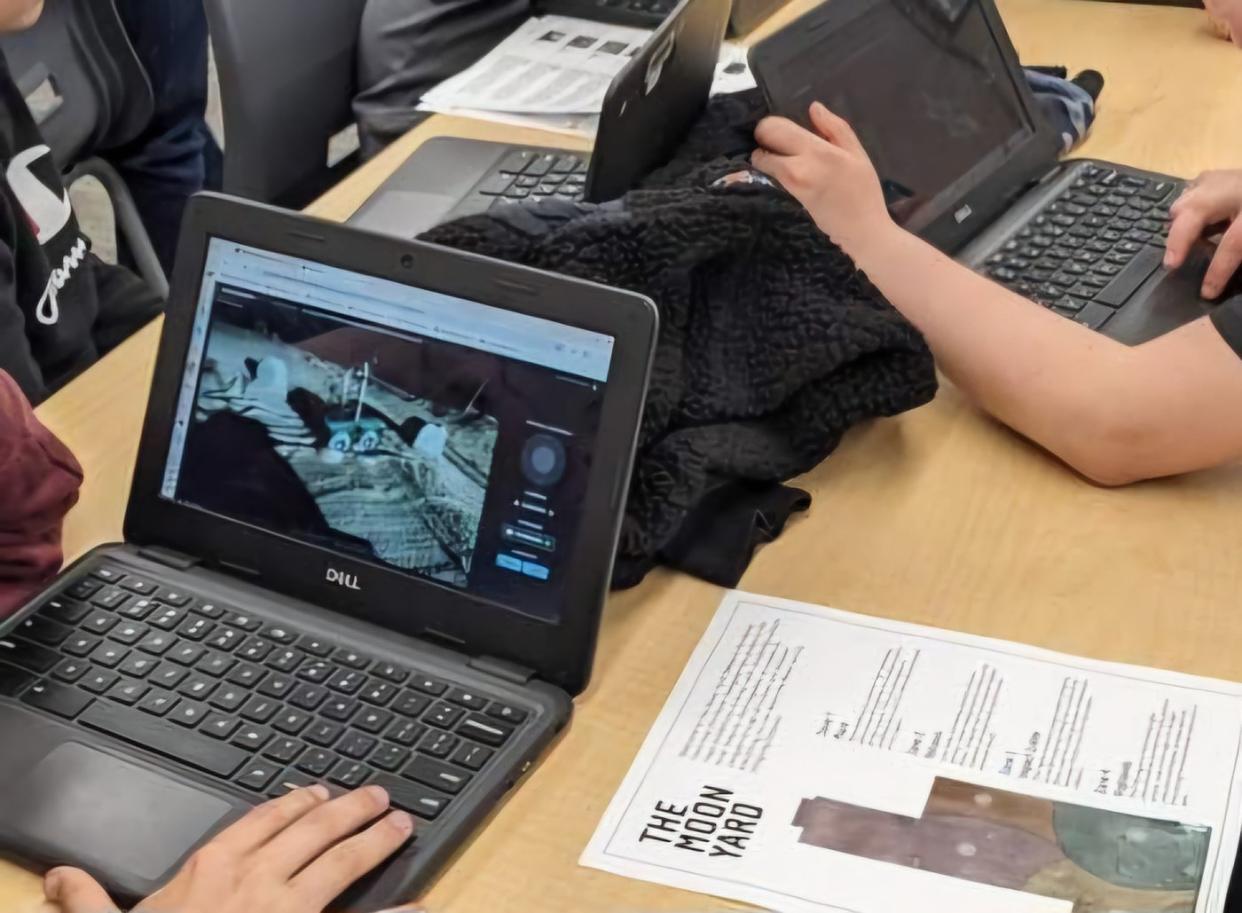Rover Driving Experiences Support STEM

On June 6, the Grade 6 students of Wakaw School had the opportunity to experience operating a lunar rover on a simulated lunar surface. Working in teams, students remotely operated the rover’s devices and navigated through different types of lunar terrain inside the Mission Control facility. Mission Control in partnership with the Canadian Space Agency brings the Rover Driving Academy to students in schools across the country, joining over 2000 Canadian students in experiencing a taste of space. Mission Control is a space exploration and robotics company focussing on mission operations, onboard autonomy, and artificial intelligence. Inspiring the next generation to keep exploring and recognize Canada’s place in space exploration, is necessary to grow the industry. Space exploration historically has been led by countries with large budgets, software and robotics can lead to less expensive more efficient missions. Horizon School Division’s STEM Instructional Coach, Jim Swan, facilitated bringing the experience to Wakaw students.
STEM stands for Science, Technology, Engineering, and Mathematics, and is more than just a group of subjects. The principle behind it is to integrate these into a holistic approach to learning and problem-solving. The Rover Driving Academy gives grades 6-9 students the chance to conduct a lunar rover mission right from their classroom. Using a specially created curriculum, students work cooperatively in teams while learning about space, science and robotics, and remotely operating rovers in Mission Control's 4000-square-foot Moonyard facility. The Moonyard is an excellent facility for educational activities and public engagement complete with 25 high-fidelity rock samples to support science instrument testing. The Rover Driving Academy is a free program offered by the Canadian Space Agency, with support from Mission Control and Pinnguap, a not-for-profit organization supporting Science, Technology, Engineering, Art, and Mathematics (STEAM) in rural, remote, and Indigenous communities.
We have always been committed to inspiring the next generation to keep exploring, said Ewan Reid, Founder and CEO at Mission Control. “The Rover Driving Academy is much more than just an educational experience. We are giving students the opportunity to use the same software used on actual lunar missions, and hopefully realize that with imagination and dedication, the future is theirs to create and that anything can be possible.”
The Rover Driving Academy creates opportunities for students to become part of a lunar research team, operate a real remote rover, explore a simulated lunar landscape, investigate areas of interest, and identify lunar features. Each student team member has a role as a rover driver, Pan-Tilt-Zoom (PTZ) camera operator, scientist, navigator, or safety specialist. The team’s scientist analyzes rocks, minerals, and geological formations by working with the PTZ operator. The camera can zoom in to capture high-quality images and analyze lunar features. The driver, PTZ operator, and navigator work together to determine where the rover is located and how to reach the different lunar regions. The navigator uses maps and precise coordinates to plan a safe route for the rover, while the driver controls the rover and moves it accordingly. The software simulates the same time lag for students that scientists experience, highlighting the importance of communicating with the team to ensure a smooth lunar mission. Rover Safety monitors the rover's hazard view, identifying obstacles and advising the team on safe navigation. They communicate potential hazards and recommend safety stops if necessary.
Students had handouts outlining the responsibilities of each team member and the requirements of the team’s mission. Swan had the students rotate through each of the roles so that all had an opportunity to drive the rover and experience every aspect of the program. Aside from the novelty of the experience, students experienced first-hand the importance of effective communication and collaborating with others to achieve a goal. “When they talk to each other and work together, they can navigate the landscape, but if they try to just ‘do their own thing’, they don’t succeed in their mission,” shared Swan. Comments overheard from students included “Wow,” “Show me how you did that,” and “It’s harder than I thought.” Their engagement with the activity was evidenced by the complete absence of any activity other than what they were completing on the computers.
“Canada's future includes space, and we want youth from every community to know they can be a part of it. The Rover Driving Academy is a sample of what it is like to be part of a mission team and start building the essential skills to have a career in space. Possibilities abound,” says Janice Cudlip, Lead, Youth STEM Initiatives Team at Canadian Space Agency.
The program includes four Lesson Plans with teacher guides. Spaces are limited, but interested teachers are encouraged to apply. If selected, Mission Control will book a one-hour time slot for students to experience remotely driving the rovers, with the information needed to teach and lead the activity provided before the driving time. After completing the classroom material, students log in from their classroom and conduct a science mission operating the rovers live in Mission Control’s ‘Moonyard.’
Mission Control is located in Ottawa and offers a testbed for system and operation testing, collecting data for research and development in robotics and more, end-to-end mission operations tests, and educational missions or training. Mission Control makes software for “Earth, the Moon and Mars and is Canada's leader in lunar rover missions.” Mission Control's Spacefarer™ software is set to be used on multiple upcoming rover missions by customers around the globe.
Carol Baldwin, Local Journalism Initiative Reporter, Wakaw Recorder


